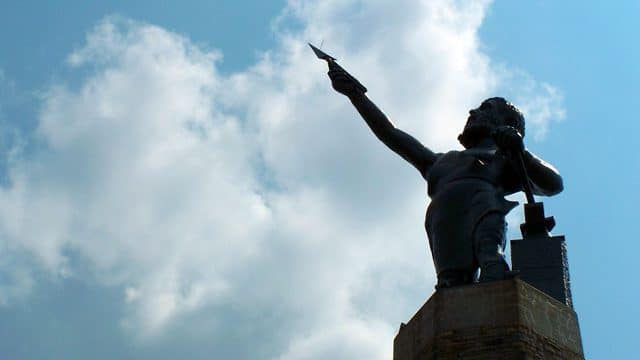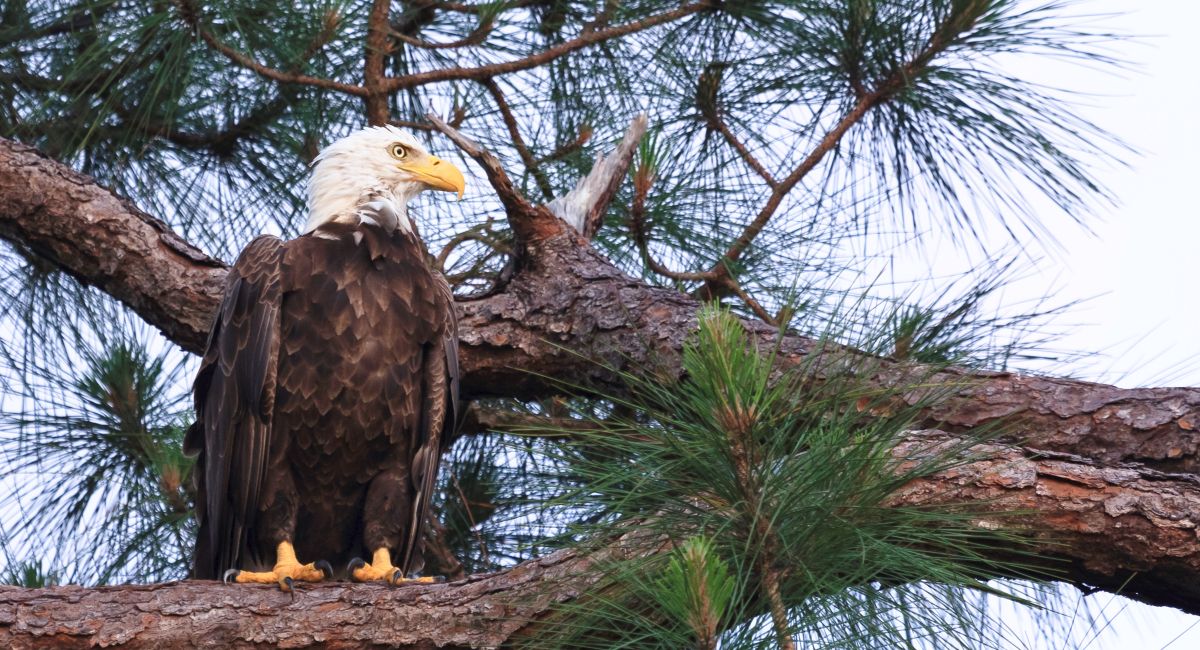November 4, 1936
Birmingham’s Vulcan statue sits high atop the Magic City and has earned notoriety as the largest cast-iron statue in the world and among the tallest statues in the nation. It was created as Birmingham’s entry for the Louisiana Purchase Exposition (1904 World’s Fair) in St. Louis, Missouri. On this day in 1936, the first section of the statue was hoisted onto the newly built tower at Vulcan Park on Red Mountain. Vulcan is the city symbol of Birmingham, Alabama, reflecting its roots in the iron and steel industry. The 56-foot-tall statue depicts the Roman god Vulcan, god of the fire and forge.
Read more at BhamWiki and Wikipedia.

Giuseppe Moretti poses with a model of his sculpture of Vulcan, commissioned in 1903 by the Commercial Club of Birmingham to represent Alabama at the 1904 World’s Fair in St. Louis, Missouri. From Encyclopedia of Alabama, Birmingham Public Library Archives)

Giuseppe Moretti’s Vulcan statue stands amid other displays in the Palace of Mines and Metallurgy at the 1904 World’s Fair in St. Louis. It earned silver medals for its creator, Giuseppe Moretti, and iron and steel manufacturers James R. McWane and J.A. MacKnight, who commissioned the monumental sculpture. (From Encyclopedia of Alabama, courtesy of the A.S. Williams III Americana Collection. The University of Alabama Libraries)

Colossal iron statue of Vulcan, in the Mines Building, St. Louis World’s Fair, c. 1904. (Underwood & Underwood, Library of Congress, Prints and Photographs Division)

Sculptor Giuseppe Moretti, center, and a group of workmen pose before the lower right leg of the statue of Vulcan in 1904, the year it was displayed at the St. Louis World’s Fair. (From Encyclopedia of Alabama, courtesy of Birmingham Public Library Archives)

Visitor Center at the Vulcan Park and Museum, Birmingham, 2011. (Chris Ballance, Flickr)

Statue of Vulcan at Vulcan Park, Birmingham, 2011. (Greg Wills, Flickr)

Vulcan statue, Birmingham, 2010. (The George F. Landegger Collection of Alabama Photographs in Carol M. Highsmith’s America, Library of Congress, Prints and Photographs Division)
For more on Alabama’s Bicentennial, visit Alabama 200.













